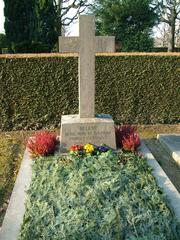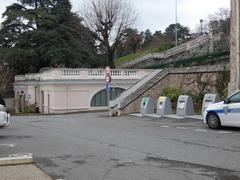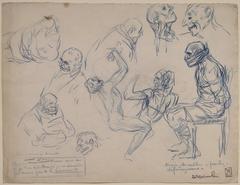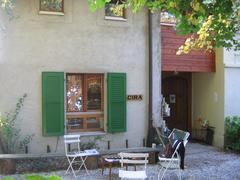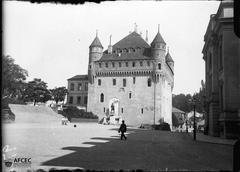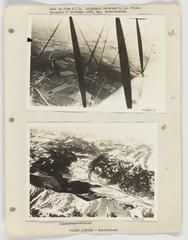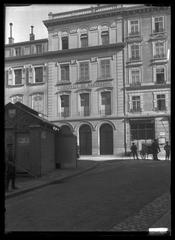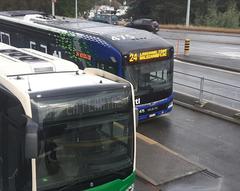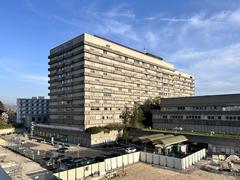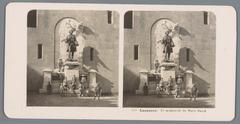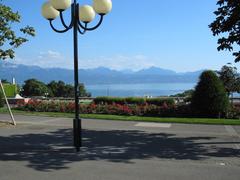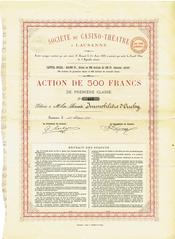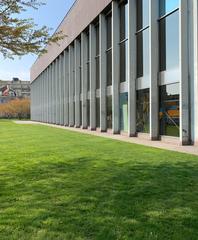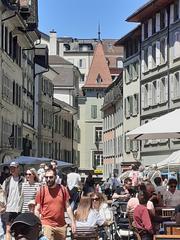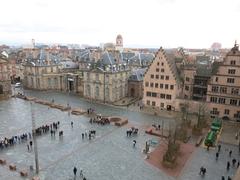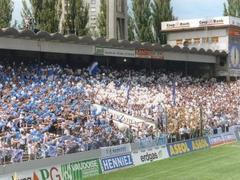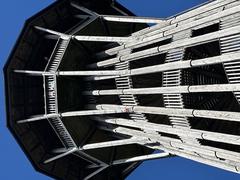Visiting Sauvabelin Park Lausanne Switzerland Guide
Date: 19/07/2024
Introduction
Nestled in the heart of Lausanne, Switzerland, Sauvabelin Park stands as a verdant oasis that seamlessly blends natural beauty, historical significance, and modern amenities. Established in 1888 as part of a broader urban planning initiative, the park has evolved into a beloved destination for both locals and tourists. Its diverse landscapes, which include wooded areas, open meadows, and the picturesque Lac de Sauvabelin, offer a serene escape from bustling city life (Lausanne Tourism). The park’s rich history is complemented by its architectural highlights, such as the iconic Sauvabelin Tower, built in 2003, which provides panoramic views of Lausanne, Lake Geneva, and the surrounding Alps (Sauvabelin Tower). As a hub of cultural and recreational activities, the park hosts various events, including outdoor concerts, festivals, and community gatherings, making it a vibrant cultural venue. Moreover, Sauvabelin Park plays a crucial role in urban planning by incorporating green spaces into the city’s fabric, a forward-thinking initiative that reflects the modern emphasis on sustainability and the importance of green spaces in urban environments (Urban Green Spaces). Whether you are a history enthusiast, nature lover, or casual visitor, Sauvabelin Park offers a unique and enriching experience that captures the essence of Lausanne’s natural and cultural heritage.
Table of Contents
- Introduction
- Origins and Early Development
- The Creation of Lac de Sauvabelin
- Architectural Highlights
- Visitor Information
- The Role of Sauvabelin Park in Urban Planning
- Conservation Efforts and Biodiversity
- Cultural and Recreational Significance
- Modern Developments and Future Plans
- FAQ
- Conclusion
- Sources
Discover the Rich History and Modern Wonders of Sauvabelin Park, Lausanne
Origins and Early Development
Sauvabelin Park, located in Lausanne, Switzerland, has a rich history that dates back to the late 19th century. The park was established in 1888 as part of a broader urban planning initiative aimed at providing green spaces for the rapidly growing population of Lausanne. The city authorities recognized the need for recreational areas where residents could escape the hustle and bustle of urban life and enjoy nature. The park was designed to offer a variety of landscapes, including wooded areas, open meadows, and a picturesque lake.
The Creation of Lac de Sauvabelin
One of the most significant developments in the park’s history was the creation of Lac de Sauvabelin in 1889. The artificial lake was constructed to enhance the park’s aesthetic appeal and provide a venue for boating and other water-based activities. The lake quickly became a popular attraction, drawing visitors from across the region. The construction of the lake was a remarkable engineering feat for its time, involving the excavation of a large basin and the installation of a complex water management system to maintain the water level (Lausanne Tourism).
Architectural Highlights
In addition to its natural beauty, Sauvabelin Park is home to several notable architectural features. One of the most iconic structures is the Sauvabelin Tower, which was built in 2003. The wooden tower stands 35 meters tall and offers panoramic views of Lausanne, Lake Geneva, and the surrounding Alps. The tower was constructed using sustainable materials and traditional building techniques, reflecting the park’s commitment to environmental conservation (Sauvabelin Tower).
Visitor Information
- Visiting Hours: The park is open year-round, 24/7.
- Tickets: Entry to the park is free. However, some attractions within the park, like boat rentals on Lac de Sauvabelin, may require a fee.
- Travel Tips: Public transportation is a convenient way to reach the park. Buses and trams from various parts of Lausanne stop near the park entrance. Parking facilities are also available for those driving.
- Nearby Attractions: While visiting Sauvabelin Park, consider exploring nearby attractions such as the Lausanne Cathedral, the Olympic Museum, and the Botanical Garden.
- Accessibility: The park is accessible to visitors of all ages and abilities, with well-maintained pathways and signage.
The Role of Sauvabelin Park in Urban Planning
Sauvabelin Park has played a crucial role in the urban development of Lausanne. The park was part of a broader movement in the late 19th and early 20th centuries to incorporate green spaces into urban planning. This movement was influenced by the ideas of landscape architects such as Frederick Law Olmsted, who advocated for the creation of public parks to improve the quality of urban life. The establishment of Sauvabelin Park was a forward-thinking initiative that anticipated the modern emphasis on sustainability and the importance of green spaces in urban environments (Urban Green Spaces).
Conservation Efforts and Biodiversity
Over the years, Sauvabelin Park has been the focus of various conservation efforts aimed at preserving its natural habitats and biodiversity. The park is home to a diverse range of flora and fauna, including several species of birds, mammals, and plants. Conservation initiatives have included the planting of native tree species, the creation of wildlife corridors, and the implementation of sustainable water management practices. These efforts have helped to maintain the ecological balance of the park and ensure that it remains a haven for wildlife (Biodiversity in Urban Parks).
Cultural and Recreational Significance
Sauvabelin Park has long been a cultural and recreational hub for the residents of Lausanne. The park hosts a variety of events throughout the year, including outdoor concerts, festivals, and community gatherings. It is also a popular destination for outdoor activities such as hiking, picnicking, and birdwatching. The park’s extensive network of trails and pathways makes it accessible to visitors of all ages and abilities. The combination of natural beauty, recreational opportunities, and cultural events has made Sauvabelin Park a beloved landmark in Lausanne (Cultural Events in Lausanne).
Modern Developments and Future Plans
In recent years, Sauvabelin Park has undergone several modern developments aimed at enhancing its amenities and accessibility. These developments have included the construction of new playgrounds, the installation of picnic areas, and the improvement of trail signage. The park’s management has also implemented measures to accommodate the increasing number of visitors, such as expanding parking facilities and improving public transportation links. Looking to the future, there are plans to further enhance the park’s sustainability initiatives, including the installation of solar-powered lighting and the promotion of eco-friendly transportation options (Sustainable Urban Parks).
FAQ
Q: What are the visiting hours for Sauvabelin Park?
A: The park is open year-round, 24/7.
Q: Is there an entry fee for Sauvabelin Park?
A: Entry to the park is free, but some attractions may require a fee.
Q: How do I get to Sauvabelin Park?
A: The park is accessible by public transportation and has parking facilities for those driving.
Q: What activities can I do at Sauvabelin Park?
A: You can enjoy hiking, picnicking, birdwatching, boating, and attending various cultural events.
Q: Are there any nearby attractions?
A: Yes, nearby attractions include the Lausanne Cathedral, the Olympic Museum, and the Botanical Garden.
Conclusion
Sauvabelin Park’s rich history, architectural highlights, and ongoing conservation efforts make it a unique and valuable asset to the city of Lausanne. Its role in urban planning, cultural significance, and commitment to sustainability ensure that it will continue to be a cherished destination for generations to come. Whether you are a local resident or a visitor, a trip to Sauvabelin Park offers a glimpse into the past, present, and future of this remarkable green space. Stay updated on the latest events and news from Sauvabelin Park by visiting the official website or downloading the Audiala mobile app.
References
- Discover the Rich History and Modern Wonders of Sauvabelin Park, Lausanne. Lausanne Tourism
- Sauvabelin Tower. Lausanne Tourism
- Urban Green Spaces. (2016). ScienceDirect. source
- Biodiversity in Urban Parks. (2020). Frontiers in Ecology and Evolution. source
- Historical Parks in Switzerland. (n.d.). SwissInfo. source
- Cultural Events in Lausanne. (n.d.). Lausanne Tourism. source
- Sustainable Urban Parks. (2020). MDPI. source

